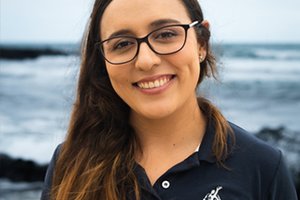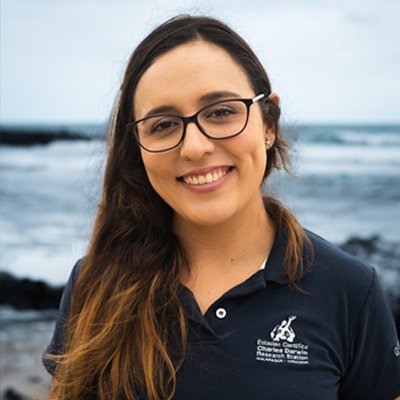In 2020, The Coleopterists Society launched a call to recognize young people between 7th grade and 3rd grade who were interested in the study of beetles. The Collection of Terrestrial Invertebrates (ICCDRS) sought students from educational institutions in Santa Cruz who were curious about the mysterious world of insects and thus encouraged them to participate in this call.
The student Sarah Schiess decided to be part of this initiative and under the guidance of ICCDRS they proposed a project entitled "The Coleoptera of my farm in Santa Cruz Island, Galapagos-Ecuador".
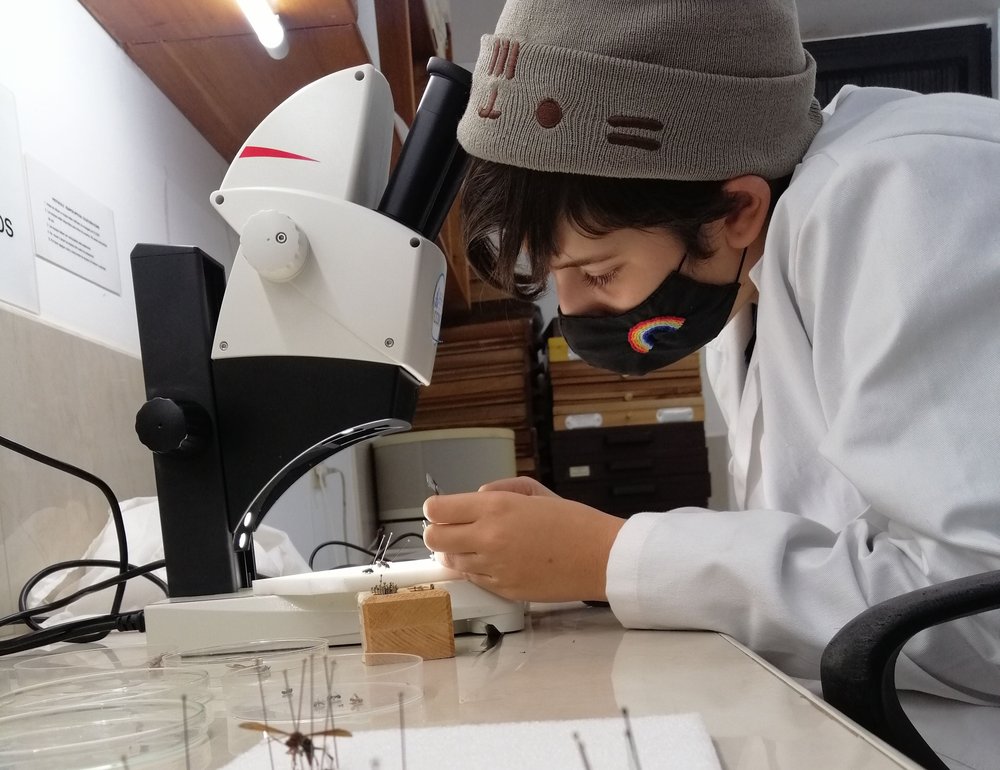
‘I wanted to see how the whole process of the bugs in the collection is done, how to preserve them. I wanted to try something new because I had never done a work like this.’
Sarah Schiess
Sarah's project began in the ICCDRS collection together with researchers from the Charles Darwin Foundation (CDF). There she learned the guidelines to develop her own project. She first learnt about the management of the Invertebrate Collection, the protocols and techniques, how to record the information, and assembly and preservation of specimens.
‘We had bugs to practice how to fix them with a pin, this activity caught my attention. Also, I was surprised by the number of bugs they have stored, and how well organized everything was, thing by thing, bug by bug – I personally don't like to organize! –'
Sarah Schiess
Sarah also learned concepts related to the taxonomy, morphology, and ecology of the insects and other invertebrates that we preserve into the collection.
‘Some beetles that I met did not have the shape of a beetle, they looked like cockroaches, fleas or like the Staphylinidae that seem to me something completely unknown. For me, the beetles are only round insects because I only knew the hammocks and others from television, but here I have learnt that there are many more shapes in nature.'
Sarah Schiess
After her induction the field work began including the selection of sampling areas within their farm called "Los Alpes Suizos" (The Swiss Alps) in Santa Cruz Island. For this study’ phase Sarah was instructed to different methodologies sampling collection and trap installation. A total of ten pitfall traps were placed in three different areas: the banana crops, the meadow, and the cattle area. These traps were placed and inspected by Sarah in order to collect the greatest diversity of beetles that were on her farm.
‘It was interesting to see the things that fell into the traps, some looked like snot! I enjoyed picking them up with the tweezers and the brush, although sometimes there were so many bugs that it was difficult for me to catch them all.’
Sarah Schiess
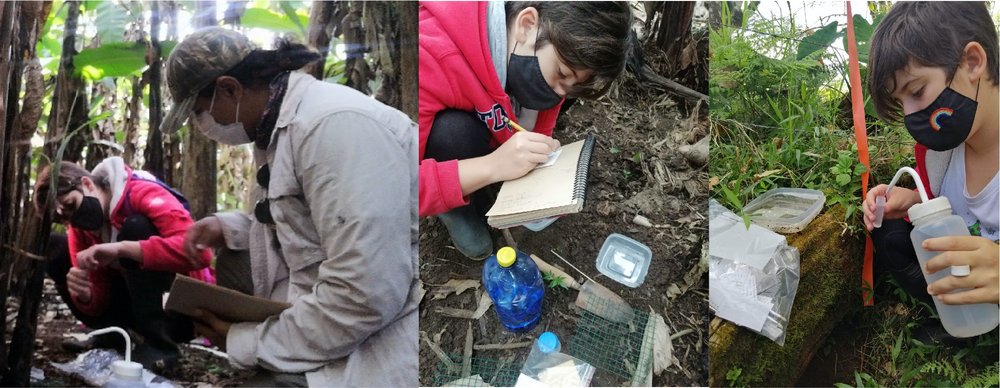
So, which beetles did Sarah find? Thanks to the tools used in the ICCDRS collection, such as the taxonomic identification keys, Sarah recognized important structures that made it easier for her to identify six specimens: Belonuchus rufipennis, Dipropus sp., Xyleborus sp., Cycloneda sanguinea, Mimographus sp., and Metamasius hemipterus. These specimens belong to different families of beetles with very different body structures, such as the smooth or rough texture of their bodies, and the diversity in their shapes, colors, and sizes. These differences inspired the artistic interest of Sarah, who has cultivated this talent since she was very young, so she included in this study the illustrations of the beetles found on her farm.
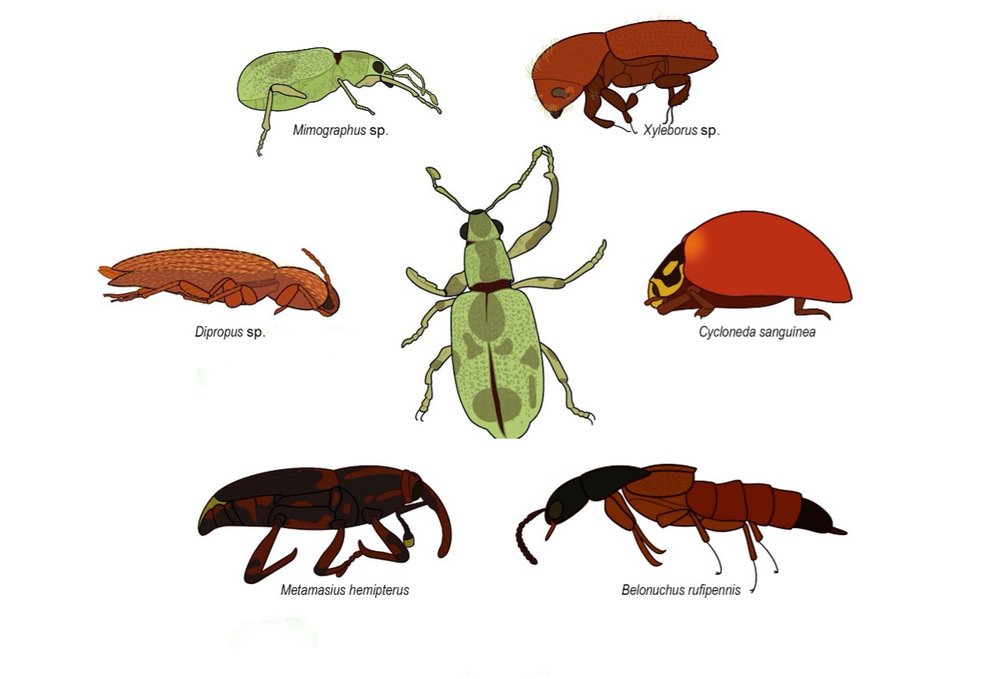
‘The beetle that I liked the most was the beetle of the genus Mimographus. It was complicated to draw it because it has little spots and I had to made them one by one. I found this beetle in the moss of a tree, probably eating.’
‘The beetle of the genus Dipropus looks like a cockroach, they have very thin hairs, but not big enough to protect them from the cold. I found this one in a trap within the meadow area.’
‘Belonuchus rufipennis looks like it can hunt something, it has jaws that look small, but to the stereoscope they looked big enough to hunt. I also learned something interesting about Staphylinidae: some species take care of their eggs! It sounds strange to me because the bugs usually lay their eggs and then the babies have to take care of themselves, the ones that lived, survived, and the ones that didn't, just die.'
‘The beetle of the genus Xyleborus looks like a flea. There are very weird as they are wide but the very end look like little hairs. They have a structure similar to beak at the end of their head, and they also have hair. I learned from them that hairs fulfill a sensory function among many insectcs.’
‘Metamasius hemipterus looks like an elephant. Drawing the head was challenging because it is elongated. I had to take several photos, each one focused on a different part and then put all together. In the banana area I also saw fruit flies and we even took a whole tube out full of them. I still don't know how to recognize a healthy banana from a sick one infected with beetles.'
‘Cycloneda Sanguine was very familiar to me since I used to take it when I played with my cousins at the farm and enjoyed watching them flying around. I think this species is very beautiful and it does not appear to be a hunter, I think they only eat plants.'
Sarah Schiess
This educational experience gives us (the team from the Natural History Collection) the opportunity to also learn from Sarah, who shares valuable information about the beetles with which she has lived since she was a child, and we were amazed by her artistic sensitivity to capture the morphological differences between insects. With this example we hope to motivate scientists from different areas to carry out research and outreach together with boys and girls from the community. This study demonstrates the importance of insisting on the investigation of other insects, which, as in the case of beetles, are one of the most diverse but sometimes not very charismatic and attractive to the community. Thus, scientific accompaniment of young students allows a real approach to these species, their importance, their structures, colors, textures, and stories.
‘The illustrations I made helped me a lot to understand the structures of the beetles, their shape, their size, their colors, the differences between them, the taxonomy. Also, I know now what scientist do in a biological collection and I also learnt that you shouldn´t kill an insect for no reason – except mosquitoes! I think that the beetles I found are so different because perhaps they were in different areas of the island or because of their contact with different animals, so they developed creative ways to survive.'
Sarah Schiess
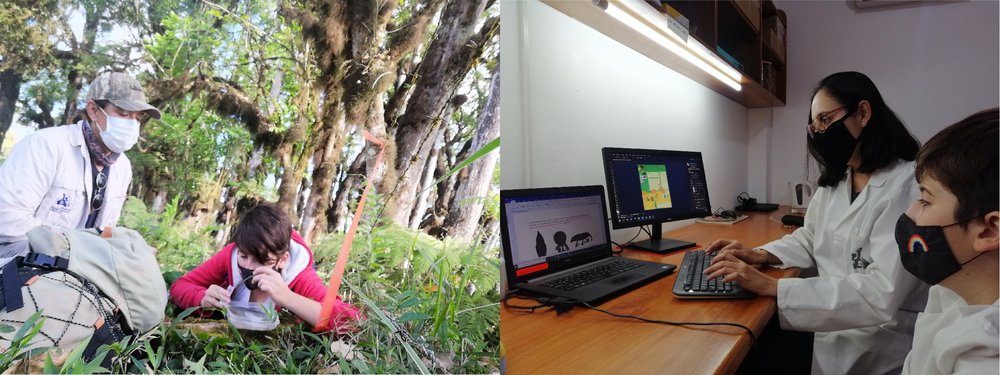
Acknowledgments:
Special thanks to Andrea Carvajal, Lenyn Betancourt and María del Carmen Vizcaíno for writing this blog, and to Patricia Jaramillo Díaz for their contributions and reviews. Also to the Coleoptera Society, the team of the Terrestrial Invertebrate Collection and the ECO Community Education and Outreach program that supported the realization of this project and finally to our donors who allow initiatives like these to continue to be carried out and thus instill an interest in science in local children and young people.





